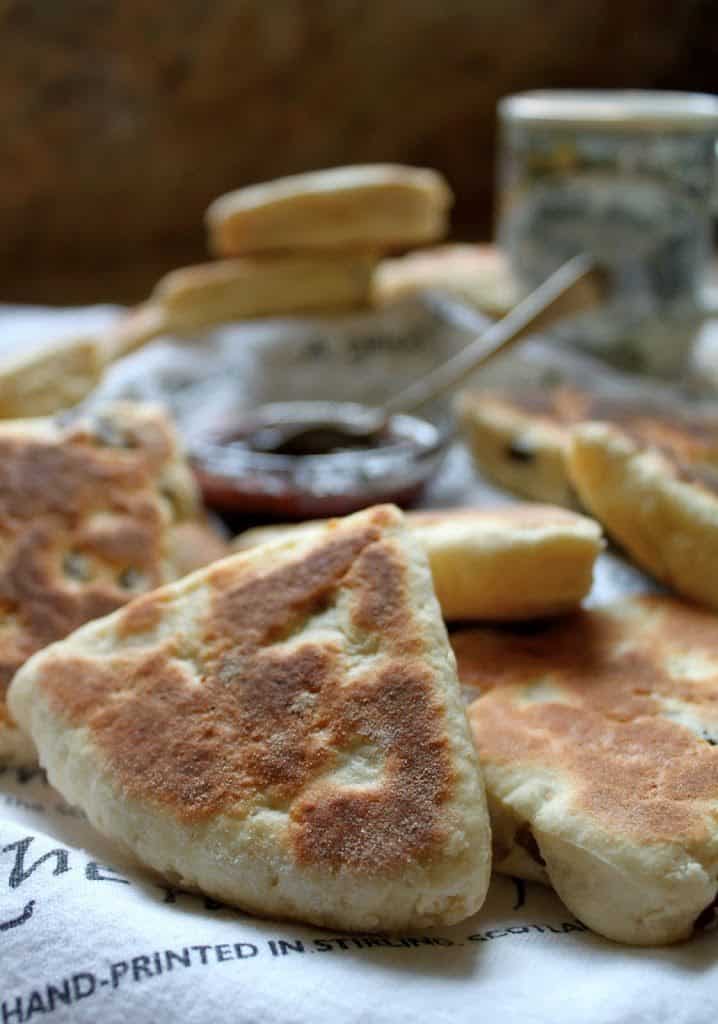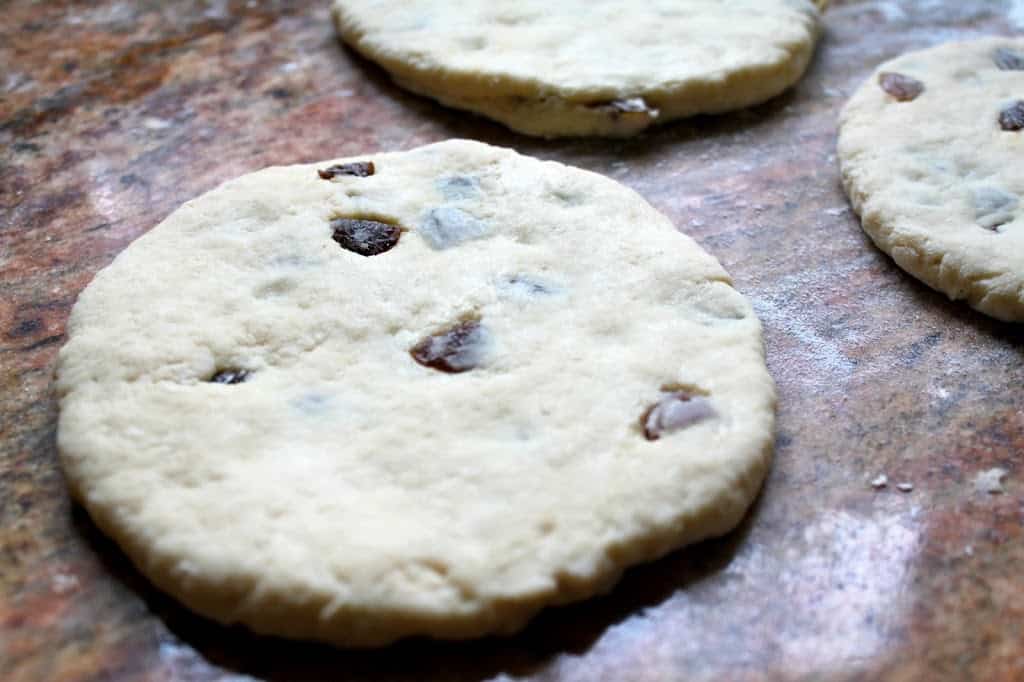Cream Girdle Scones (Stove-Top Scones)
Cream Girdle Scones are simply griddle scones, which, instead of being baked in the oven, are cooked on a stovetop griddle. They have a taste all their own and you may just fall in love with them.

I have to admit that I’m a “spelling-nazi”.
It’s just how I was born; I can’t help it. I found one of my own typos on my blog this morning and although it was a real typo, I still had a minor heart attack. That said, I did not misspell the word “girdle” in the title above.
As an Amazon Associate I earn from qualifying purchases.

What are Girdle Scones?
Here’s the explanation from Wikipedia:
In the Scots language and the Northumbrian English dialect, a griddle is referred to as a “girdle”. Therefore “griddle scones” are known as “girdle scones”.
So, now that I’ve cleared that up, here’s the next anomaly: I have absolutely no idea why they are called Cream Girdle Scones–maybe they used to be made with cream instead of milk? I’m unsure, but what I do know is that they are delicious.
This is another recipe my mother used to make when I was a little girl growing up in Scotland. It’s perfect for whenever you want to make scones, but don’t want to turn on the oven as they are cooked on a griddle (or you can use a nonstick pan.) They’re very quick to make, and really easy too.
If you would like to make the more well-known baked scones, here’s a great recipe.
My mother actually made the scones in the photos, and she prepared a double batch so that we could have some plain and some with raisins. It’s another great idea to make double the recipe, then cook half and freeze the other half.
By the way, in case you’re wondering: I pronounce SCONE as rhyming with GONE (as in what happens to these when you make them)!
Cream Girdle Scones (Griddle Scones)
adapted from a Lofty Peak recipe
- 8 oz (1 3/4 to 2 cups) sifted, self-raising flour (or all-purpose flour with 2 tsp baking powder)
- 1 oz (1/8 cup) sugar
- 1 oz (1/4 stick) butter
- 4 oz (1/2 cup) milk (I used buttermilk)
- 1 egg
- pinch of salt
- 2 oz (1/4 cup) raisins, or currants–optional
Make the scone dough
Cream the butter and sugar, then add the egg.
Add the milk, then the flour and salt, and mix until…
it comes together into a dough. (If adding raisins, do so at this time.)
Turn out onto floured surface and fold over until smooth and divide in two. Roll out each half and cut into 4 quarters.

Cook the girdle scones
Place on preheated griddle set at about medium high to test, (if some flour turns light brown in a few seconds, it is ready).
Turn the scones when they have risen, and the bottoms are dark colored.
Continue to cook until the other side is also well-colored and scone is cooked entirely.
Remove from heat and cool in a kitchen towel for a few minutes before serving.
Serve while warm with butter, jam and/or cream and some hot tea!
Don’t miss another travel or recipe post; subscribe to my free subscription below.

Cream Girdle Scones (Stove-Top Scones)
Special Equipment
- 1 large bowl
- 1 roller
- 1 griddle
Ingredients
- 1 ¾ cups to 2 cups self-rising flour sifted (or all-purpose flour with 2 tsp baking powder)
- ⅛ cup sugar
- 1 oz butter
- ½ cup milk (I used buttermilk)
- 1 egg
- ⅛ tsp salt
- ¼ cup raisins or currants, optional
Instructions
- In a large bowl, cream the butter and sugar, then add the egg.
- Add the milk, then the flour and salt, and mix until it comes together into a dough. (If adding raisins or currants, do so at this time.)
- Turn out onto floured surface and fold over until smooth and divide in two. Roll out each half and cut into four quarters.
- Place on preheated griddle set at about medium high to test, (if some flour turns light brown in a few seconds, it is ready). Turn the scones when they have risen, and the bottoms are dark colored.
- Continue to cook until the other side is also well-colored and scone is cooked entirely.
- Remove from heat and cool in a kitchen towel for a few minutes before serving.
- Serve while warm with butter, jam and/or cream and some hot tea.
Notes
- Nutrition facts include raisins.
- These freeze beautifully, so make an extra batch and freeze raw or cooked.
Nutrition
Christina’s Cucina is a participant in the Amazon Services LLC Associates Program, an affiliate advertising program designed to provide a means for sites to earn advertising fees by advertising and linking to Amazon.com.













This excellent recipe is almost identical to my late granny’s (from Sutherland in the far north of Scotland). She, however, used 1 tsp of bicarbonate of soda and 2 tsp of cream of tartare, adding a “soup spoon” of Lyles golden syrup for the plain girdle scones.
Oh, I bet the syrup helped in them rising, Steven! Happy to hear it :)
I do think these won’t work if you just use milk – has to be buttermilk or sour milk. Needs some acid in the mix.
They absolutely “work” Mary. This is a vintage recipe, and you can see from the photos that they come out beautifully. Also, you sent me a video of someone making soda scones which are different from this recipe.
Here is my recipe for soda scones. I suggest you try both recipes as they are both incredibly tasty! :)